HtoA 6.4.5.0 - Arnold for Houdini
12 November 2025
HtoA 6.4.5.0 is a minor feature release using Arnold 7.4.4.0. Arnold 7.4.4.0 includes improved Global Light Sampling, a new scattering mode for hair shader, faster textures, a better bloom lens effect, and much more.
Installation
Download Arnold for Houdini from your Autodesk Account. See Download Arnold for more information about downloading HtoA from your Autodesk Account.
Follow these installation instructions
Enhancements
-
Arnold MaterialX nodes with surface shader outputs are now exposed (HTOA-3006):

-
Improved Arnold MaterialX Workflows (HTOA-3006): Added a USD MaterialX Builder (Arnold) shelf tool to avoid confusion when building renderer agnostic MaterialX shaders.
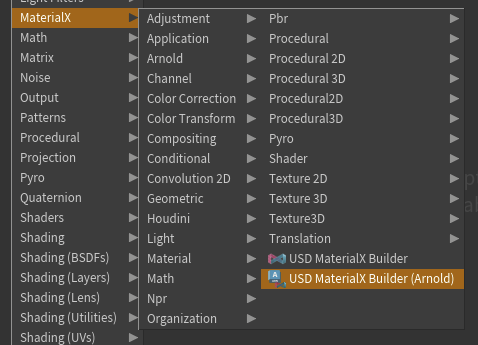
This creates a USD MaterialX Builder with the tab menu mask preconfigured to show Arnold MaterialX VOPs and vanilla MaterialX VOPs:

(The vanilla USD MaterialX Builder node no longer shows Arnold MaterialX nodes in the tab menu)
- Support cryptomatte with instances in Houdini 21 usd#2436: The cryptomatte instances hashes are now consistent between frames in Houdini 21.
- Increased Global Light Sampling (GLS) robustness and added support for light spread: GLS is now more robust, and GLS takes the
spreadparameter ofquadanddisklights into account. This typically reduces noise when lights have a narrow spread, or the spread is close to the light edges. We have observed up to 6x faster renders in some test scenes with especially tricky lighting. In the below back-alley scene, which has a more common lighting setup with some lights with a spread, this gives a 1.4x-faster render. (ARNOLD-13684, ARNOLD-16610 and ARNOLD-16551)
 |
| 1.4x faster than 7.4.3 |
 |
 |
| 7.4.3.2 | 7.4.4.0 (same number of samples as 7.4.3.2) |
- Scattering mode for standard hair: A scattering option
scattering_modehas been added to the standard hair shader. Use theapproximatemode to get the previous behavior. Theaccuratemode can be noisier, and so takes about 10 to 30% longer to render, but delivers more realistic results, especially in close-ups, by simulating each hair as a cylinder instead of flat surface. Theadaptivemode uses theaccuratemode for close-up hairs and theapproximatefor far-away hairs, automatically balancing quality and performance. (ARNOLD-16726, ARNOLD-16852)
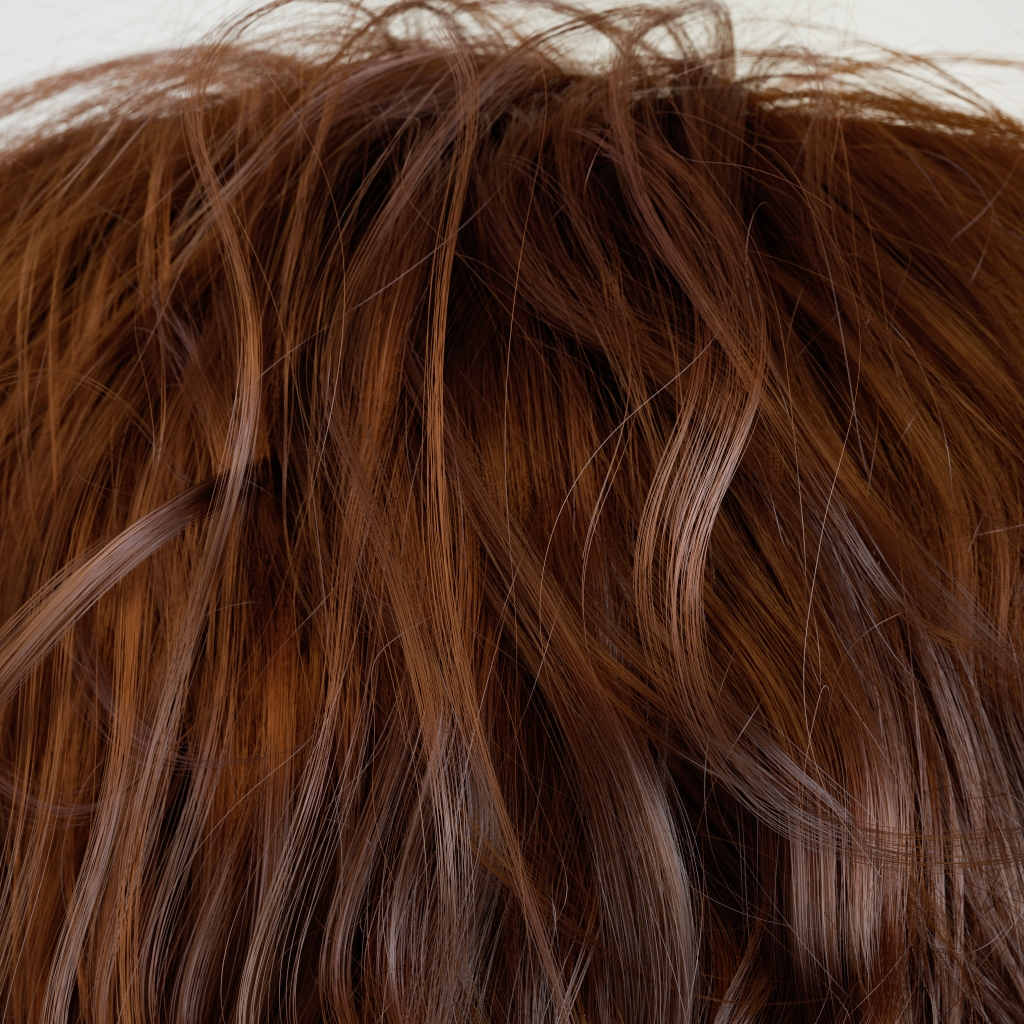 |
 |
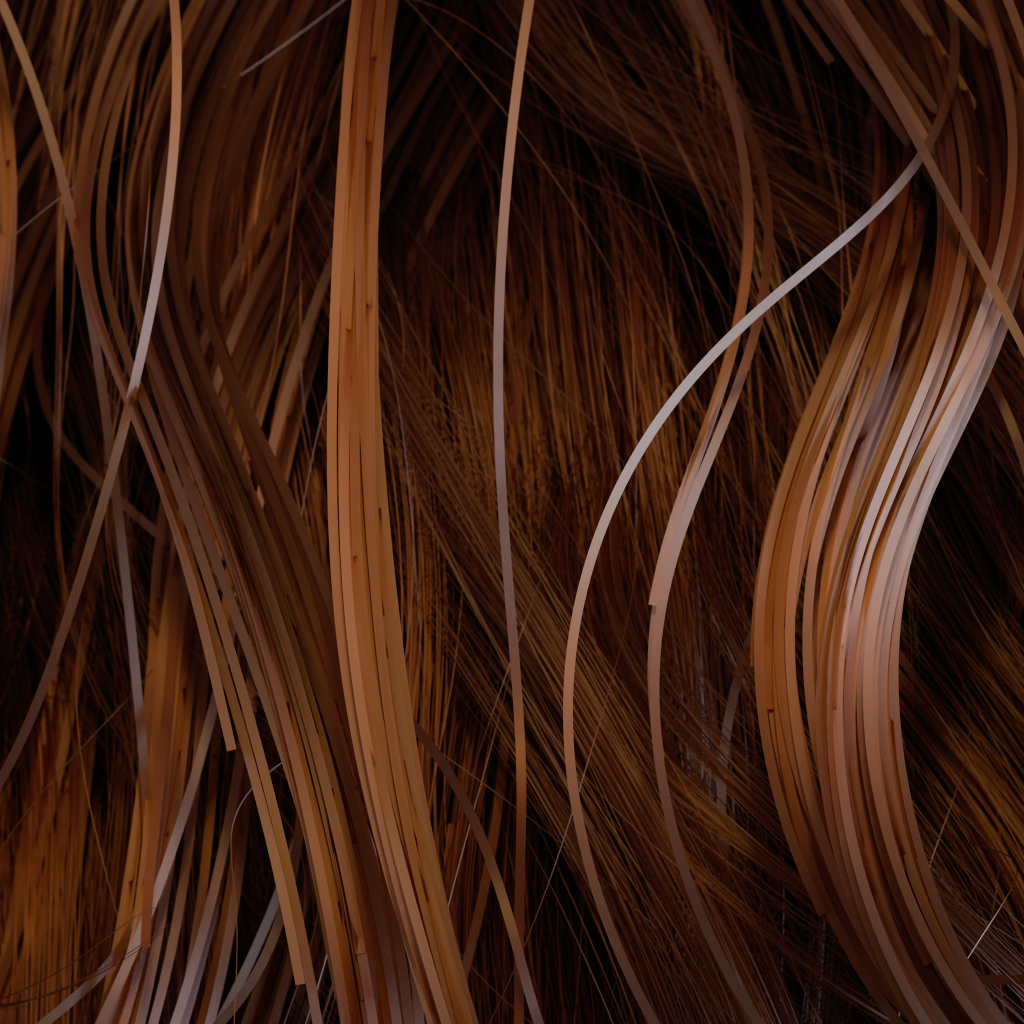 |
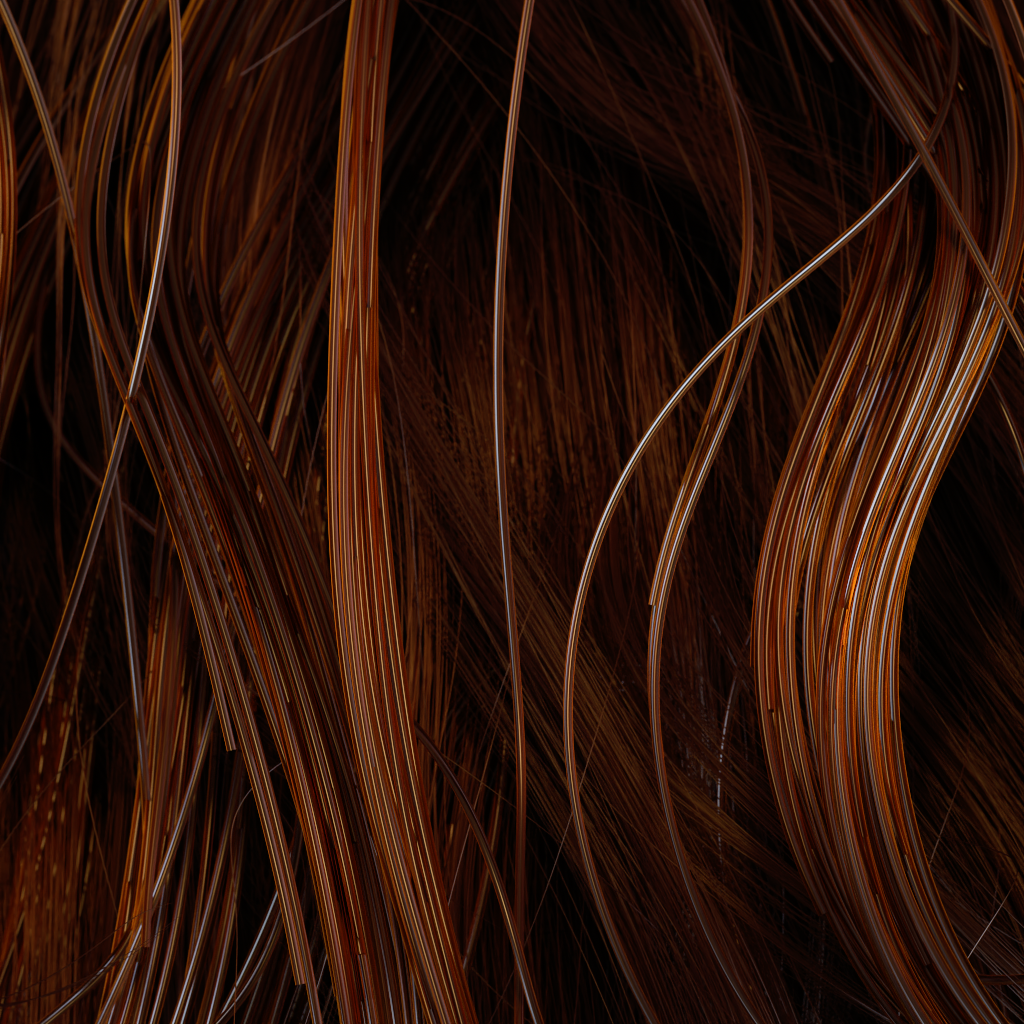 |
| approximate | accurate | approximate (closeup) | accurate (closeup) |
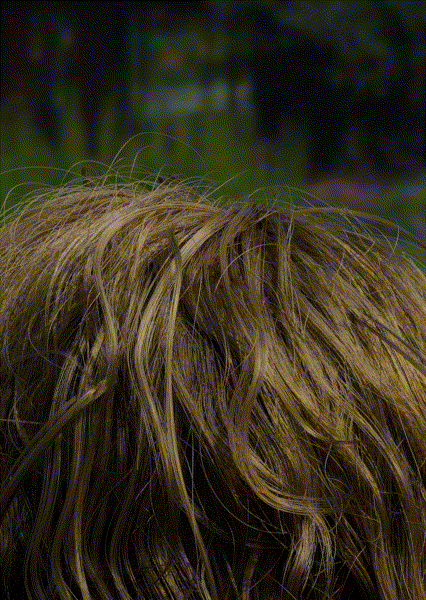 |
| adaptive |
- Improved performance when auto-generating or using existing TX files:
Checking for existing TX files and auto-generating missing ones is now significantly faster, reducing time-to-first-pixel when using
texture_use_existing_txortexture_auto_generate_tx. As the charts below show, speedups are most pronounced on many-core machines, particularly on Windows. (ARNOLD-13116)
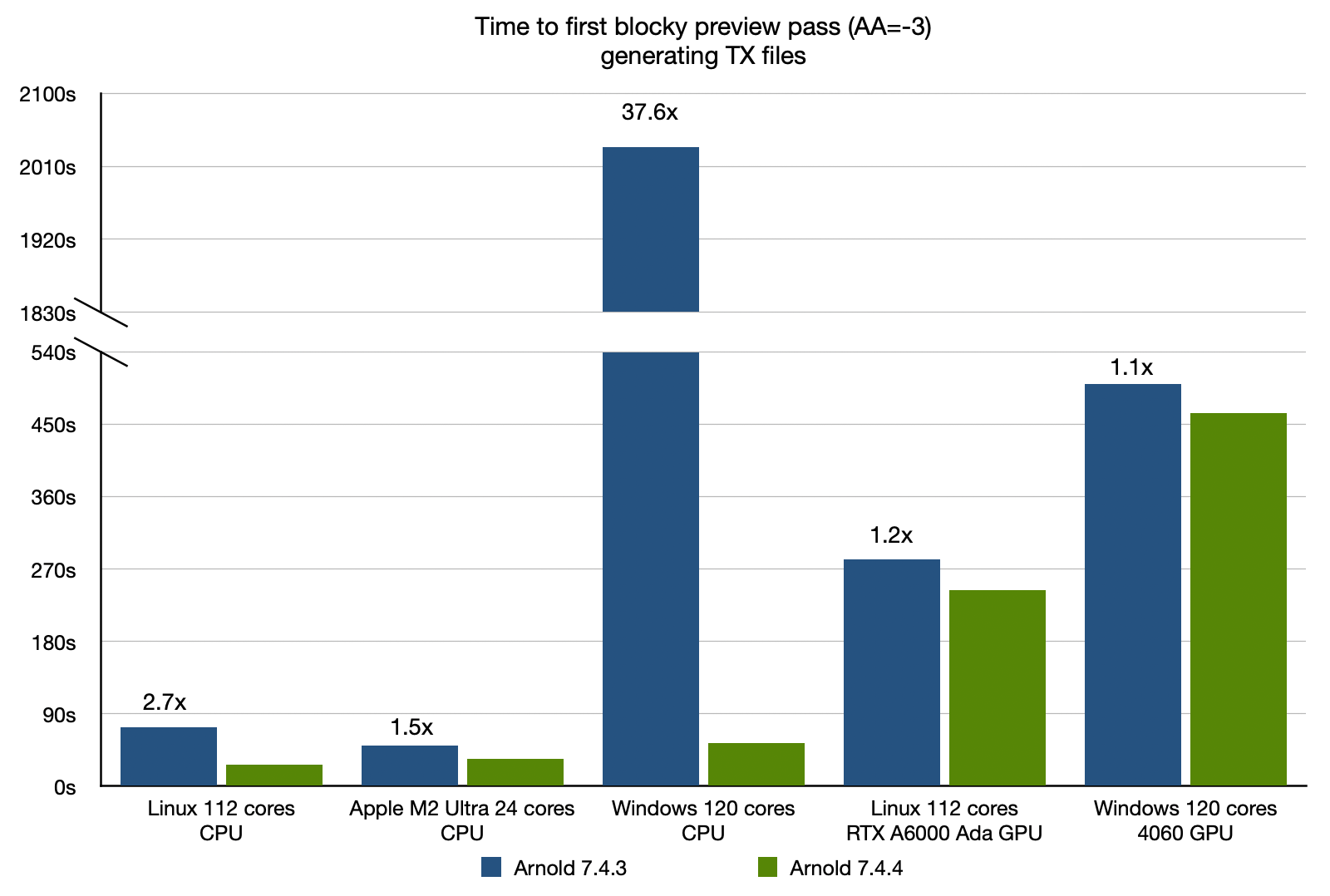 |
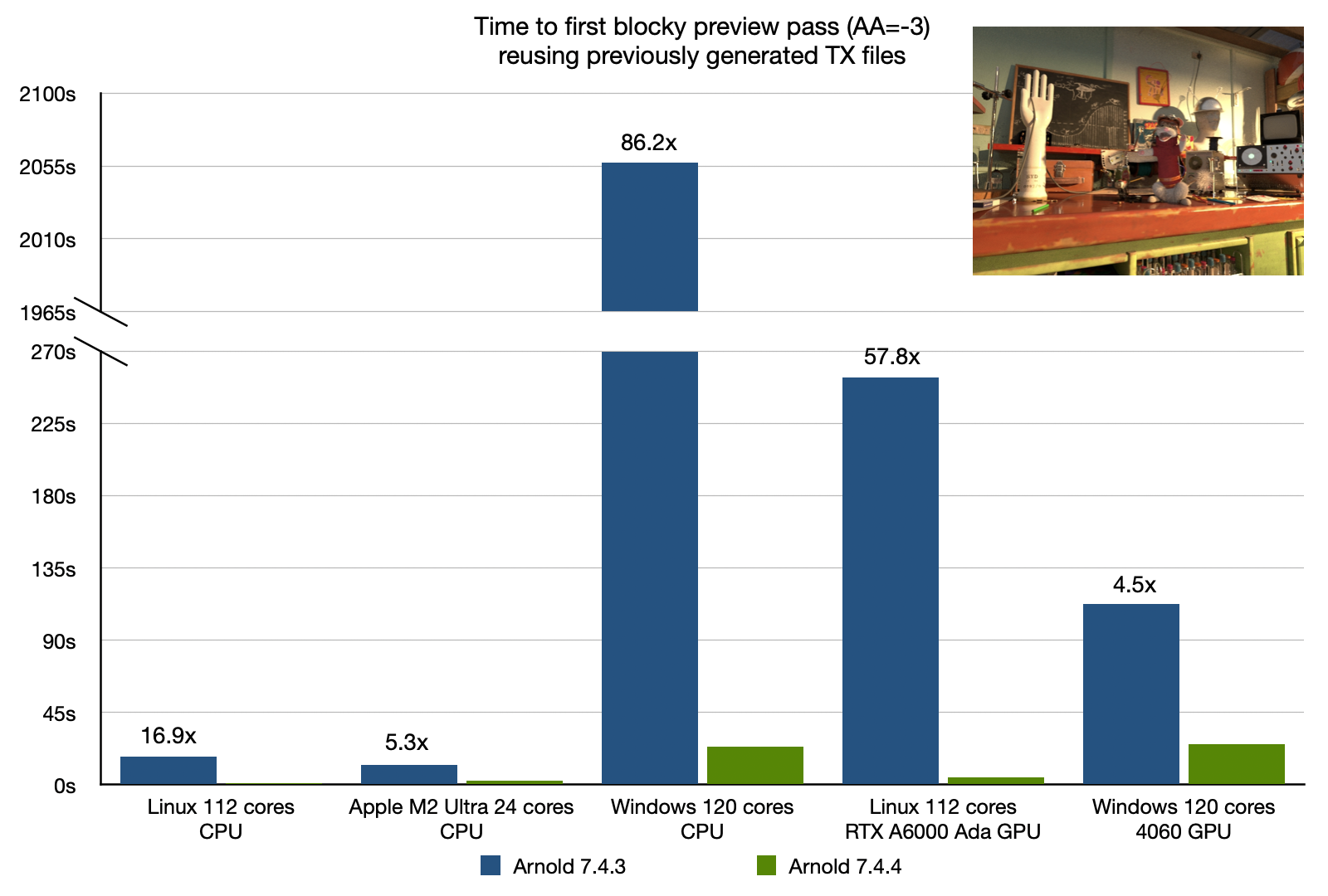 |
texture_auto_generate_tx speedup |
texture_use_existing_tx speedup |
- Improved bloom lens effect: The lens effects imager has improved bloom modes that can run in a fraction of a second and produce more interesting bloom effects. The new
aperturebloom mode procedurally mimics the bloom defined by a physical camera and you can control the size withbloom_strength, and the shape and number of spikes withaperture_bladesandaperture_curvature. The other new mode,shape_fileallows you to load a bloom kernel from disk. (ARNOLD-10882, ARNOLD-16614)
- Improved OpenPBR Surface thin film: Thin film is now more physically correct, with improved energy conservation. Note that this may produce a significant change in hue in existing assets. Note also that this change has not been applied to the Standard Surface shader, for backwards compatibility. (ARNOLD-15981)
 |
 |
| 7.4.3 | 7.4.4 |
Enhanced parameter override support for GPU rendering: Parameter overrides now function consistently across both CPU and GPU, providing significantly improved robustness, especially in complex scene graphs with overrides on instanced procedurals. (ARNOLD-8663)
GPU denoising on Linux and NVIDIA Blackwell support: The OIDN denoiser can now make use of NVIDIA GPUs in Linux. The 2.3.3 OIDN upgrade brings in support for NVIDIA Blackwell GPUs, such as the RTX 50x series cards, and AMD RDNA4 GPUs. (ARNOLD-15745, ARNOLD-16201)
Reduced GPU memory usage for instances: GPU acceleration structures of instances are now compacted in order to save GPU memory. For example, in a scene with one million instances, this reduces GPU memory usage from 195 MB to 167 MB. (ARNOLD-16556)
GPU support for motion vector shader: The motion vector shader is now supported in GPU rendering. (ARNOLD-15172)
Sampling mode for lights: Lights have a new
sampling_modeenum parameter which controls the type of sampling used for that light. In the defaultautomode, the light is either sampled according to the global light samples render options if enabled or the local sample settings. Inlocalmode, the light is sampled according to the light'ssamplesandvolume samplesparameters, and will be sampled separately from lights that are covered by global light sampling. Local mode helps to make sure that important, hard-to-sample lights receive enough samples. (ARNOLD-13467, ARNOLD-16746)Increased the maximum number of samples for Global Light Sampling: The maximum number of samples used by the global light sampler is now 1024, for both GPU and CPU. (ARNOLD-16552)
Light blockers with negative density: Light blockers with ramps and negative density values are now supported. (ARNOLD-16338)
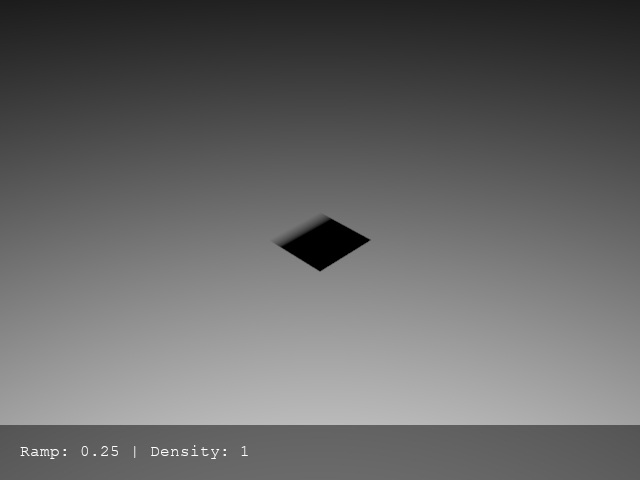 |
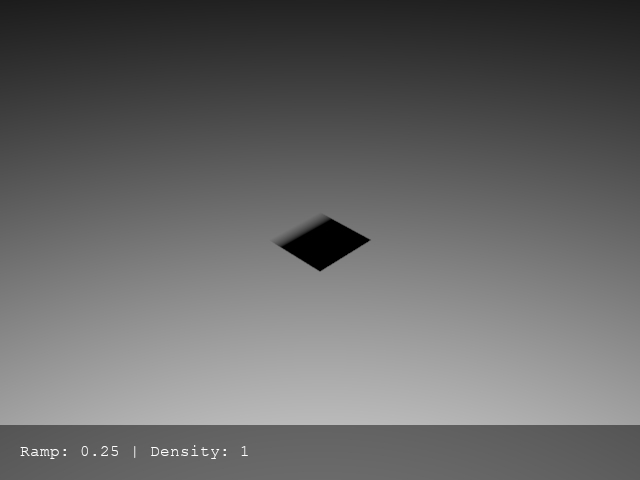 |
| 7.4.3 | 7.4.4 |
Control whether mesh lights cast shadows: You can now make mesh lights invisible to shadow rays so that they do not cast shadows. This makes mesh lights behave like other light types, which also do not cast shadows. You use the polymesh visibility flag to control mesh light shadows. (ARNOLD-15560, ARNOLD-16803)
Separate statistics for frame and session data: During interactive renders, Arnold now tracks two types of statistics: per-frame for individual frame renders and per-session for accumulated values normalized across the entire render session. The log outputs statistics for each frame in addition to the session statistics, while statistics JSON files contain the final frame statistics and session statistics. This separation helps a user analyze both the performance of individual frames and the overall render session. (ARNOLD-16735)
Render Report: enhanced statistics visualization: The Arnold Render Report now displays both per-frame and session statistics during interactive renders. Additional improvements include stacked bar graphs for better visualization of these statistics and other user experience enhancements. (ARNOLD-16736)
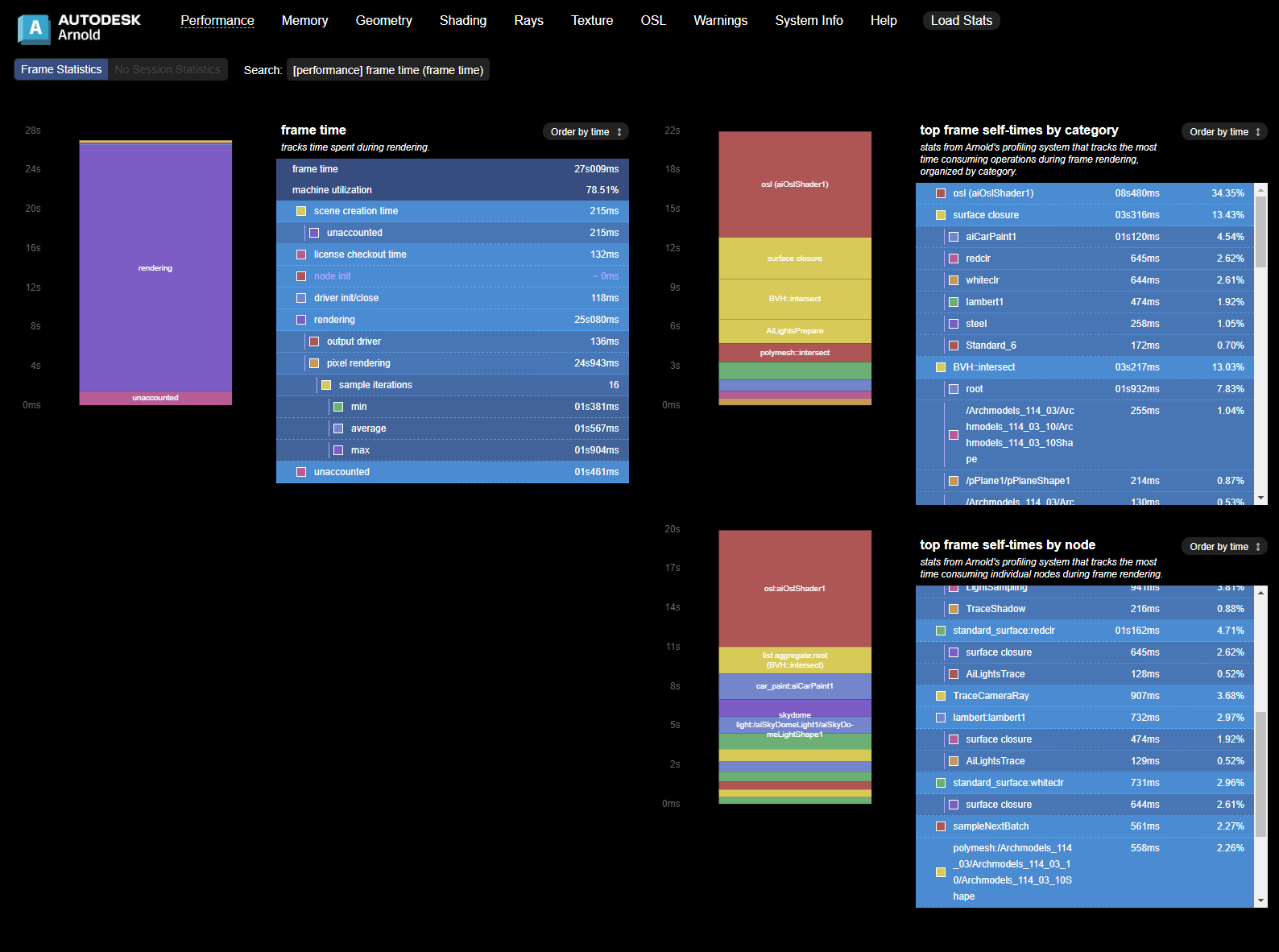 |
compare_stringshader: Arnold now has acompare_stringshader that supports equals and not equals comparisons between two strings. (ARNOLD-12978)Total render time in EXR metadata: When appending to a previous render, total render time is accumulated and updated in the EXR metadata. (ARNOLD-15565)
Support crypto_object_offset along with crypto_object user data:
crypto_objectandcrypto_object_offsetuser data can now be used together on shapes. Now the cryptomatte key contains both user data values, appended to each other. (ARNOLD-16825)kick custom arguments with scene format plugins: You can use the new kick argument
-sceneload_arg %s %sto pass options to scene format plugins.-sceneload_argtakes two strings: the option name and its value. This allows you to specify a custom render settings primitive when you kick a usd file. For example,kick scene.usd -sceneload_arg render_settings /Render/settings2renders using the render settings primitive named "/Render/settings2" (ARNOLD-9865)Default denoiser option for kick: The kick
-default_nodesflag has a newdenoiseroption that adds the OIDN denoiser if no denoiser is present. (ARNOLD-16641)Overlay imager cross-platform support: The overlay imager now renders with an equivalent system font if the specified font is not available. For example, some commonly used Windows fonts, like Arial and Courier New, are replaced with Liberation or DejaVu fonts on Linux and vice versa. (ARNOLD-16892)
Add inference_device parameter to Inference imager on macOS: We have added the
inference_deviceparameter to the inference imager on macOS to improve parameterization consistency across platforms and to simplify usage. (ARNOLD-16846)
USD Enhancements
- Verbosity override: kick -v now correctly overrides any verbosity settings stored in the usd files. usd#1633
- Support multiple AOVs with the same source: It is now possible to have multiple AOVs having the same source and different filters in the RenderProduct. usd#2331
- Render settings resolution with windowNDC: If the render resolution is explicitly set in the render settings AND a windowNDC is provided, we correctly set the render region and keep the resolution. usd#2440
- Imager interactivity improvement: When an imager is updated the IPR renders are not restarted anymore. usd#2452
API Changes
Unify search paths: Procedural and texture search paths are now unified into a new
asset_searchpath. LUTs for the tonemap imager also use this new search path. (ARNOLD-16486)Chiang hair BSDF available in OSL: A new closure,
chiang_hair_bsdf, is now available for use in OSL. This closure corresponds to the BSDF used in the standard hair shader withscattering_modeset toaccurate. (ARNOLD-16326)interactive_target_fps: The fps targets for IPR can now be controlled by setting
interactive_target_fpsonly.interactive_target_fps_minandinteractive_fps_minare still available, but sensible defaults are set if values are not provided. (ARNOLD-16219)AiLibraryPath: Added new API function, returns the path to the directory that the Arnold library is located in. (ARNOLD-16642)
Incompatible Changes
Linux minimum raised to RHEL/Rocky 8: Arnold no longer supports CentOS 7 and now requires at least RHEL/Rocky 8 or a similar distribution. Newer versions of Linux, such as Rocky 9, should work but are untested. Other distributions may work if they use glibc 2.28 or newer. (ARNOLD-15746)
Hue shift with OpenPBR Surface thin film: The energy conservation changes can produce a significant change in hue when using thin film in OpenPBR. (ARNOLD-15981)
Mesh lights do not cast shadows when shadow visibility is disabled: In previous versions of Arnold, mesh lights cast shadows. You can now control this using the source polymesh visibility flag, so mesh lights will cast shadows only if the polymesh is visible to shadow rays. (ARNOLD-15560)
Deprecated simple bloom mode: The
simplebloom mode and itsbloom_radiusparameter are now deprecated. Instead, use the newaperturemode with a curvature of 1 to get a round bloom, andbloom_strengthinstead ofbloom_radiusto adjust size of bloom. (ARNOLD-16928)Scene creation time stats: The scene creation time stat has moved under "frame time". Now "frame time" will be larger and should report the true total time it took to make that frame. (ARNOLD-16735)
Parameters deprecation: The procedural parameters
threads,debug, andhydraare now considered legacy and deprecated. usd#2418
Bug Fixes
HTOA-2995 - The Intel Denoiser has been renamed to OIDN for consistency
HTOA-2573 - Arnold MaterialX Surface Shader nodes (such as OpenPBR) now work correctly in Houdini 20 and 20.5
ARNOLD-12517 - Filename starting with / or ./ do not work with search paths
ARNOLD-15987 - Crash when using camera.filtermap parameter with GPU rendering
ARNOLD-16176 - Existing forward references to linked nodes are removed when immediate values are set for shader links
ARNOLD-16780 - Apply path mapping and environment variable expansion to directly-referenced .tx files
ARNOLD-16780 - Avoid searching for texture files in the autotx target path
ARNOLD-16780 - Fix bug when AiResolveFilePath is passed an absolute path
ARNOLD-16788 - Fix incorrect gpu_support metadata
ARNOLD-16833 - Render Report displays milliseconds 10x too small
ARNOLD-16857 - Continuous full-scene update after cryptomatte update when dependency graph is disabled
ARNOLD-16862 - Render Report: pixel rendering sample iterations are output as microseconds
ARNOLD-16868 - Render Report: warning page incorrectly defaults to performance page
ARNOLD-16900 - Blurry cryptomatte on CPU when scene contains an OIDN or Optix denoiser
ARNOLD-16932 - Geometry hit stats can sometimes be incorrect
ARNOLD-16933 - Polymesh stats not decremented when deleting polymesh nodes
ARNOLD-16947 - Crash on operators with nested instanced procedurals containing lights
ARNOLD-16973 - Deep alpha generates rare NaNs when opacity AOV is not used
ARNOLD-17023 - Non-rectangular quad_light disables other lights
ARNOLD-17040 - Use TX file in temp directory if it already exists
usd#2441 - Fix invalid motion ranges caused by motion_start and motion_end attributes
usd#2415 - Incorrect transform when exporting complex object hierarchy to USD
usd#2408 - Fix render region calculation when based on windowNDC
System Requirements
Houdini, Houdini FX, Houdini Indie and Houdini Education
- 20.0.896
- 20.5.684
- 21.0.512
Linux with at least glibc 2.17 and libstdc++ 11.2.1 (gcc 11.2.1) for Houdini 20/20.5. This is equivalent to Rocky 8.
macOS 11 or later
Apple Mac models with M series chips are natively supported by HtoA
x86-64 CPUs need to support the SSE4.1 instruction set. Apple Mac models with M series chip are supported natively mode.
GPU rendering works on Windows and Linux only and requires an NVIDIA GPU with the Maxwell architecture or later.
- On Linux, we recommend 580.95.05 or higher drivers.
- On Windows, we recommend 581.42 or higher drivers.
Optix™ denoiser requires an NVidia GPU with CUDA™ Compute Capability 5.0 and above.
Intel OIDN GPU support is limited to:
- MacOS
- Apple native CPUs (M1 and newer)
- Windows
- Intel Xe dedicated and integrated GPUs
- NVIDIA GPUs using Turing or newer architectures
- MacOS
